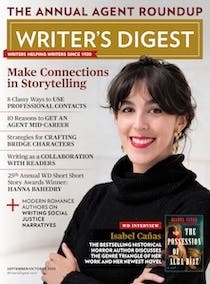The Rewrite Process
We have three weeks of the semester left, and I’m feeling that end-of-semester paradox of being completely burned out but also stunned at how fast it’s gone. The last few…
We have three weeks of the semester left, and I’m feeling that end-of-semester paradox of being completely burned out but also stunned at how fast it’s gone.
The last few weeks before break, we focus on the rewrite process. Yesterday, we got into groups and discussed the work of our classmates. Then we gave each other our written feedback. The task now is to go back and rethink our first drafts—and then rewrite them.
I don’t want to!
Don’t get me wrong: I’m no prima donna, and I can handle constructive criticism and even, sometimes, flat-out rejection (it’s part of the writer’s life!). But I’m very protective of the manuscript I turned in. I don’t know why: it’s not the best story I’ve ever written, but I still really like it just how it is—I spent the month of August “perfecting” it—and I feel like I’ve exhausted my coffers. Do you ever write something like that, that’s so very you, you don’t want anyone fiddling with it? Even if you recognize that it needs to be fiddled with? That’s how I’m feeling right now.
But my professor said something interesting last night. He told us that you may be in love with a paragraph you’ve written, but you still have to ask yourself what the story’s needs are—which sometimes are different from your own personal needs. “Sometimes,” Randy said, “you just have to cut those little darlings.” I liked that phrase: “little darlings,” those lovely sentences that don’t necessarily push the story forward in any way. But I’m still fighting with the idea of it, and don’t know if I’ll actually be able to do it.
Then, my other professor, Patty, gave me another disturbing piece of advice about the re-write I have to do with my creative essay. She suggested that when I go to do it, I should open a completely new document; don’t just edit out the parts I want to change. I’ve never done that before, though I hear that D.H. Lawrence’s revision process worked the same way: he’d write a draft, then try to rewrite by heart without looking at the original. The parts that stayed, I guess, were the parts worth remembering. The parts that changed or dropped were the parts that needed changing or cutting.
I’m going to try both of those things: cutting my darlings and revising from scratch, and although I’m not too crazy about either tactic, I trust my teachers enough to believe they know what they’re talking about.
What is your rewrite process?
Jane Friedman is a full-time entrepreneur (since 2014) and has 20 years of experience in the publishing industry. She is the co-founder of The Hot Sheet, the essential publishing industry newsletter for authors, and is the former publisher of Writer’s Digest. In addition to being a columnist with Publishers Weekly and a professor with The Great Courses, Jane maintains an award-winning blog for writers at JaneFriedman.com. Jane’s newest book is The Business of Being a Writer (University of Chicago Press, 2018).



